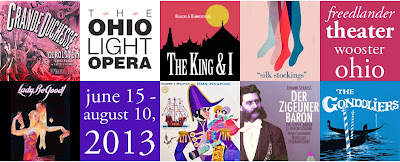The David Mayfield Parade. Good Man Down.
David Mayfield compares his albums to the Indiana Jones films. This one is supposed to be Temple of Doom, compared to the band’s first, which was Raiders of the Lost Ark. I’m not sure how far the analogy follows, although this album is a bit darker than the first, sort of like the Indiana Jones movies. And clearly Harrison Ford and David Mayfield are both manly hunks. But Temple of Doom cost $28 million, while Good Man Down was put together with money from the crowdfunding site Kickstarter. You can decide for yourself which is the better product.
David Mayfield grew up partly in Kent, Ohio, and partly on the road and in Nashville with his family’s bluegrass band, One Way Rider. Returning to Kent, he left again for the bright lights of the country music capital, where he worked as a sideman, and joined the bluegrass group Cadillac Sky, later working with sister Jessica Lea Mayfield, the Avett Brothers, and other folks. He’s certainly well-thought of in Americana music circles.
The opening track, “Love Will Only Break Your Heart,” is a fine introduction, a bluegrass dish with all the fixin’s and probably my favorite song on the album. Vocals and harmonies by Mayfield and Seth Avett are really sweet, and Jim Vancleve plays a fine fiddle. The two instrumental pieces, both short and labelled “superfluous” are hardly that. The first is a dark atmospheric piece, while the second is more high octane bluegrass with some rock guitar thrown in. I found both very enjoyable and quite well-played, and each segues into the track following, with similar attitude. “From a Dream” is more Americana than bluegrass, and Mayfield’s songs tend to move back and forth among various styles, emphasizing one over the other, but he’s not a purist, and seems happy blending to suit his musical vision. “Another Year” brings us guests Doyle Lawson & Quicksilver with a host of other musicians and an echo chamber (?). It’s a strong tune, with gospel harmonies and the graveyard theme of the lyrics give it a dark and lonely feel. Actually, most of the lyrics in the songs are dark and lonely, but don’t let that dissuade you.
Mayfield goes a bit alt country with “The Willow and the Babe,” and a tune in a similar style, “Tempted,” with guest Dierks Bentley. The tunes are comparatively sprightlier with a rather cheerful sound until the lyrics pull the listener down again. They remind me (only in spirit) of some old British Invasion tunes like “World without Love,” with a cheery tune but lyrics that don’t match. “Was It Only Me” and “Little Blue Car” take us even further into bleakness, but the tunes are beautifully played and finely sung. “Trapped Under the Ice” is more of a rocker, but very effective, with an insistent beat and some electronics for effect. Mayfield’s vocals take on a touch of rockabilly, and he sounds great, as does the guitar solo. He ends the album on a ballad, soft, sweet, and sad.
The cartoon accompaniment in the booklet shows the struggle between two super-powered folks, one good, one evil, both of whom look like Mayfield. There seems to be some struggle in the songs he gives as well, with the dark side clearly winning this round. There’s barely a hint of the clowning David Mayfield one sees on YouTube videos and in concert. A fine album in nearly all aspects (the booklet has the songs out of order, and which musicians are members of the Parade, I can only guess), I would recommend this to anyone who likes roots/Americana music.
Personnel: David Mayfield (guitars, bass, programming, mandolin, mellotron, vocals), Wes Langlois (electric guitar), Jim Vancleve (violins), Joe Giotta (drum kit, percussion), Rebekah Jean (vocals, piano, celeste); Shelby Means (upright bass), Seth Avett (vocals), Jen Maurer (accordion), Kristin Weber (violin), Josh Swift (resonator guitar), Anderson East (electric guitar, electro-mechanical piano), Steve Gulley (vocal), Dierks Bentley (vocals), John Michael Gentile (marimba), Paul Kovak (acoustic guitar), Bob Cesare (timpani), Dave Huddleston (guitars), Mike Lenz (electric guitar), Jason Edwards (drum kit), Ryan Cavanaugh (5-string banjo), Christina Schreiber (trumpet), Sarah Clanton Schaffer (cello), Doyle Lawson & Quicksilver (bluegrass vocals).
Tracks: Love Will Only Break Your Heart, Superfluous Instrumental, From a Dream, Another Year, Human Cannonball, The Willow and the Babe, Tempted, Was It Only Me, Little Blue Car, Superfluous Instrumental Reprise, Trapped Under the Ice, Goodbye Farewell So Long.
Jeff Wanser












